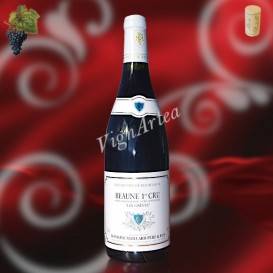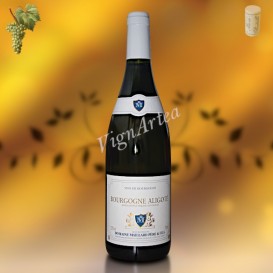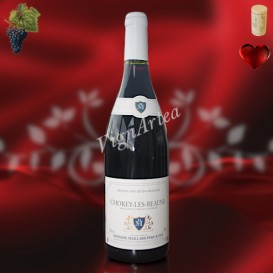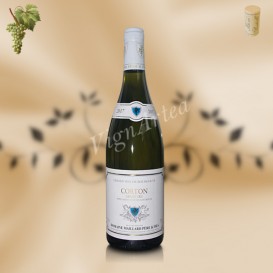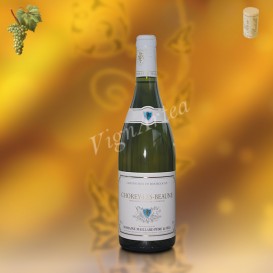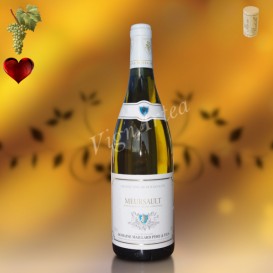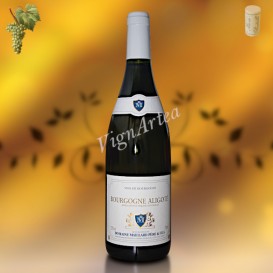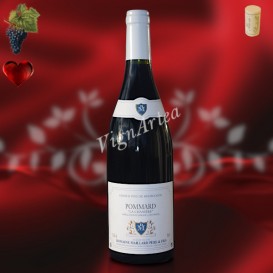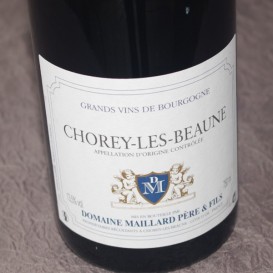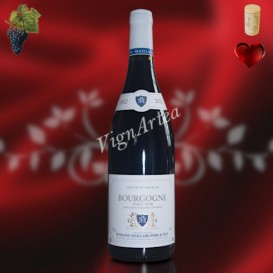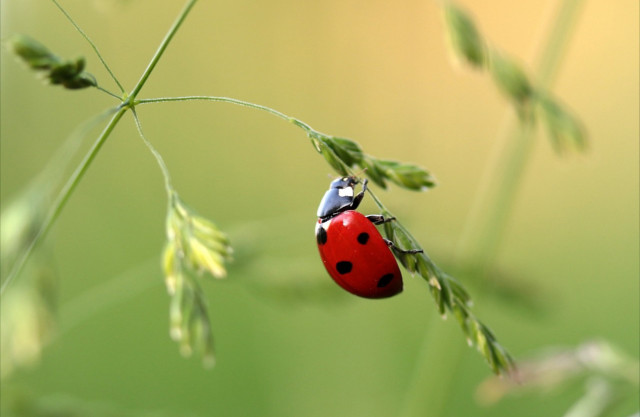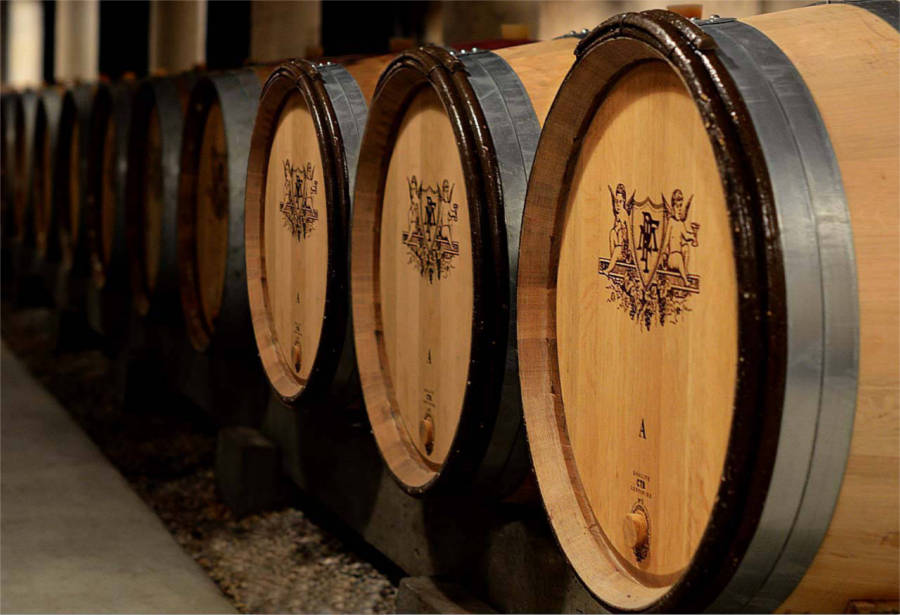Domaine MAILLARD Père & Fils - Bourgogne

BURGUNDY CÔTE DE BEAUNE 19 ha Sustainable Agriculture WINEMAKER: MAILLARD Family
ESTATE HISTORY
Located in Chorey-Lès-Beaune, the MAILLARD estate was created in 1952 by Daniel MAILLARD, whose family has been growing vines since 1766. His two sons, Alain and Pascal, have now taken over the reins of the estate.
The vineyard covers 19 hectares, spread over 17 designations of the Côte de Beaune. It is one of the very first Burgundy estates I worked with, and whose wines seduced me by their irreproachable gustatory quality.
What I like about their wines is that they can be drunk young, the tannins are silky and smooth, and they have an excellent cellar potential: they can easily reach 10-15 years of ageing when stored in good conditions.
TERROIR
The Côte de Beaune begins in Ladoix with the Corton mountain, where the geological layers of the Upper Jurassic appear, and it ends south of Volnay, where, from Meursault onwards, we find the geological layers of the Middle Jurassic.
Generally speaking, the Côte de Beaune's terroir is characterised by large marly outcrops, in total contrast to the Côte de Nuits where the latters appear in a very limited and localised way.
These thick marl layerswere deposited when the region was entirely covered by deep seas during the Jurassic period. Their slow and gradual retreat may have favoured a very diverse marl sedimentation depending on the sector: between Ladoix and Meursault, the Côte des Beaune is made up of marl-limestone soils dating from the Oxfordian (Upper Jurassic) and dominated by a regular and continuous layer of limestone that can be seen at the top of the Corton moutain. The nature of the Oxfordian layers varies strongly and brutally from one plot to another and provides the Côte de Beaune with a great diversity of soils.
With the play of faults, exposures and altitudes, the nature of the subsoil composes an extraordinary mosaic of climates whose characteristics are found in the wines typicity.
WINEGROWING & WINEMAKING
Both in the vineyard and in the cellar, the Maillard estate has remained very traditional in their winegrowing and winemaking méthods. I have classified the estate in the Sustainable Agriculture category because the MAILLARD family does not systematically treat the vines, they only use synthetic products when necessary.
The estate could very easily obtain the Organic Agriculture label, but the MAILLARD family does not wish to do so in order to be able to remain free to move about: the climatic difficulties encountered in recent years seem to rule in their favour, as many winegrowers had to sacrifice their AB certification to save their harvest.
The grapes are harvested manually and are picked plot by plot. They are meticulously sorted before being pressed for the white varieties, or partially or totally destemmed for the red varieties.
For the fermentations, the estate works with indigenous yeasts and bacteria. The red grapes are macerated for 12 to 20 days, during which time the colour and tannins are gently extracted by punching down. The must is then pressed and the juice is racked into 228-litre Burgundy barrels where it is aged for 12 to 20 months depending on the designation. Some of the barrels are new, the proportion varying according to the year and the designation. The white wines are made directly in oak barrels, the proportion of new barrels also varies, as it does for the red wines.
Once the maturing process is over, the must is generally not filtered so as not to "slim" it and to allow it to continue to gently mature in bottle.
-
BEAUNE 1ER CRU LES GRÈVES 2023 (Domaine Maillard)
56,20 € In stock!BOURGOGNE - AOP BEAUNE 1er CRU - RED WINE
Grape variety: Pinot noir (100%)
Ageing in oak barrels for 18 months (40% of new barrels)
fruity - fresh - tasty
- Nose: rich and refined. Notes of crisp red berries with a hint of spice.
- Palate: silky. Rich, fresh and thirst-quenching juice.
- Tasting date: July 2025
- OUR OPINION: as good as ever, this vintage is a real treat. Juicy, refined and charming, it will appeal to lovers of light and delicious red Burgundies!
- Nose: rich and refined. Notes of crisp red berries with a hint of spice.
-
BOURGOGNE ALIGOTÉ 2023 (Domaine Maillard)
13,00 € In stock!BOURGOGNE - AOP BOURGOGNE ALIGOTE - DRY WHITE WINE
Grape variety: Aligoté (100%)
Lees ageing for 12 to 18 months in 228 liter burgundy barrels
Delicate - Tonic - Light
- Color: very pale yellow.
- Nose: the initial lightly toasted notes open up to scents of white flowers, lemon with a hint of creaminess.
- Palate: fresh, delicate and lemony./li>
- Tasting date: June 2023.
- OUR OPINION: the 2023 vintage is less exuberant than its predecessors, presenting a rather floral and delicate profile, both on the nose and the palate. It has a great energy and will appeal to lovers of light and fresh white Burgundies.
- Color: very pale yellow.
-
CHOREY-LES-BEAUNE RED WINE 2022 (Domaine Maillard)
27,00 € In stock!BOURGOGNE - AOP CHOREY-LES-BEAUNE - RED WINE
Grape variety: Pinot noir (100%)
Ageing in oak barrels for 18 months (25% of new barrels)
Dense - Racy
- Nose: concentrated and dense. Notes of crushed black fruit and cocoa with a hint of smoke.
- Palate: silky and elegant. Melted tannins. Dark fruit finish.
- Tasting date: September 2024.
- OUR OPINION: 2022 is a deeper and denser vintage than 2021, which displays exuberance and small red fruits. It will be perfect with stewed or candied meat dishes. It should be decanted for half an hour while young.
- Nose: concentrated and dense. Notes of crushed black fruit and cocoa with a hint of smoke.
-
CORTON GRAND CRU WHITE WINE 2022 (Domaine Maillard)
98,00 € In stock!BOURGOGNE - AOP CORTON GRAND CRU - DRY WHITE WINE
Grape variety: Chardonnay (100%)
Ageing in 228-liter oak barrels for 12 to 18 months with stirring
- Color: golden wheat-colored.
- Nose: powerful and fragrant. Notes of tangerine, pink grapefruit, roasted almonds, acacia flowers.
- Palate: ample and intensely perfumed. Long finish on lemon and verbena.
- Tasting date: tasting notes of the 2017 vintage.
- OUR OPINION: the tiny quantities supplied do not allow me to sacrifice a bottle for tasting. As those wines are of impeccable quality year after year, I wrote the tasting notes of the 2017 vintage as an indication.
- Color: golden wheat-colored.
-
CHOREY-LES-BEAUNE WHITE WINE 2023 (Domaine Maillard)
26,70 € In stock!BOURGOGNE - AOP CHOREY-LES-BEAUNE - DRY WHITE WINE
Grape variety: Chardonnay (100%)
Ageing in 228-liter oak barrels for 12 to 18 months with stirring
Fresh - Complex - Elegant
- Nose: intense and rich. Aromas of fresh citrus fruit, white stone fruit and a hint of toast.
- Palate: invigorating and full. Long, lemony finish.
- Tasting date: September 2024.
- OUR OPINION: 2023 plays the freshness card and presents a fine aromatic complexity. This white is as beautiful and intense as ever!
- Nose: intense and rich. Aromas of fresh citrus fruit, white stone fruit and a hint of toast.
-
MEURSAULT 2022 (Domaine Maillard)
56,00 € In stock!BOURGOGNE - AOP MEURSAULT - DRY WHITE WINE
Grape variety: Chardonnay (100%)
Ageing in 228-liter oak barrels for 12 to 18 months with stirring
Powerful - Complex - Tonic
- Nose: elegant and toasty. Toasty notes, aromas of lemon, mandarin, verbena with a hint of anise.
- Palate: perfectly balanced, invigorating, fresh and delicious. Long aromatic persistence.
- Tasting date: August 2024.
- OUR OPINION: superb Meursault, with great complexity, freshness and energy! A real favorite!
- Nose: elegant and toasty. Toasty notes, aromas of lemon, mandarin, verbena with a hint of anise.
-
BOURGOGNE ALIGOTÉ 2022 (Domaine Maillard)
13,00 € In stock!BOURGOGNE - AOP BOURGOGNE ALIGOTE - DRY WHITE WINE
Grape variety: Aligoté (100%)
Lees ageing for 12 to 18 months in 228 liter burgundy barrels
Fresh - Mineral - Thirst-quenching
- Nose: fresh and mineral. Citrus notes with a hint of citron and mint.
- Palate: supple but invigorating attack. Smooth on the palate.
- Tasting date: August 2024.
- OUR OPINION: a vintage full of freshness and minerality, light, subtle and thirst-quenching! Very pretty!
- Nose: fresh and mineral. Citrus notes with a hint of citron and mint.
-
POMMARD La Chanière 2022 (Domaine Maillard)
53,00 € In stock!BOURGOGNE - AOP POMMARD - RED WINE
Grape variety: Pinot noir (100%)
Ageing in oak barrels for 18 months (50% of new barrels)
Tasty - Fruity - Fresh
- Nose: charming and delicious. Notes of black fruit and black pepper with a hint of cinnamon.
- Palate: round, tasty and very pleasantly fruity. Long-lasting aromas.
- Tasting date: August 2024.
- OUR OPINION: this Pommard is a real delicacy. The 2022 vintage is tasty and deliciously fruity. A real favourite!
- Nose: charming and delicious. Notes of black fruit and black pepper with a hint of cinnamon.
-
CHOREY-LES-BEAUNE RED WINE 2021 (Domaine Maillard)
27,00 € In stock!BOURGOGNE - AOP CHOREY-LES-BEAUNE - RED WINE
Grape variety: Pinot noir (100%)
Ageing in oak barrels for 18 months (25% of new barrels)
Expressive - Delicious - Elegant
- Nose: expressive and delicious. Notes of black pepper, cinnamon and black fruits.
- Palate: round, fluid and very fragrant. Juicy finish.
- Tasting date: September 2024.
- OUR OPINION: this 2021 vintage is a real treat!
- Nose: expressive and delicious. Notes of black pepper, cinnamon and black fruits.
-
BOURGOGNE PINOT NOIR 2023 (Domaine Maillard)
19,60 € In stock!BOURGOGNE - AOP BOURGOGNE - RED WINE
Grape variety: Pinot noir (100%)
Ageing in oak barrels for 12 months
Tasty - fruity - Round
- Nose: very fruity. Notes of strawberry candy, black cherry and a hint of spices.
- Palate: supple, silky and juicy.
- Tasting date: August 2024.
- OUR OPINION: a very successful vintage! Drink young to enjoy its black cherry aromas, a real treat!
- Nose: very fruity. Notes of strawberry candy, black cherry and a hint of spices.
- 1
- 2

